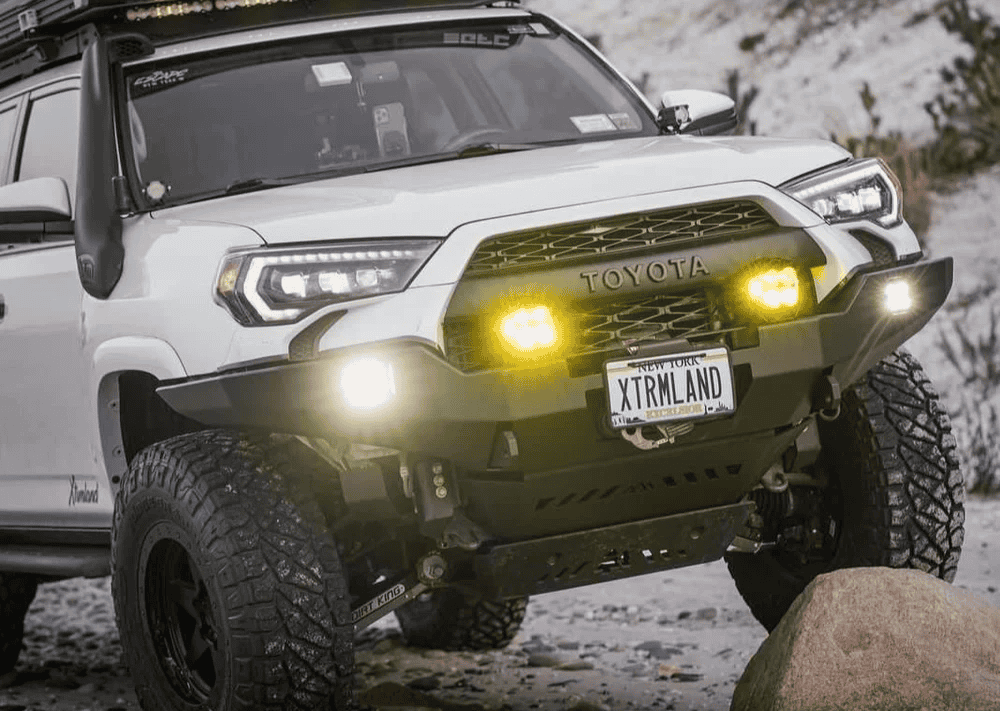Overland Vehicles

Propane cylinders must be restrained in all axes under dynamic conditions. Think in terms of load paths, where forces travel from the tank through saddles and straps into brackets, then into primary structure. Avoid relying on thin sheet metal alone. Tie into frame rails, reinforced crossmembers, or engineered inserts within the body.
Vibration is the quiet killer. Use isolation pads at contact points to prevent fretting, and include anti rattle strategies like formed straps with captive hardware and lock nuts. Clearance matters as well. Leave space for tank expansion and easy removal, while protecting valves and relief devices from impact.
Ventilation and drainage are part of the structure. Exterior mounts benefit from airflow that disperses any minor seepage, while enclosed spaces require sealed boxes vented to the outside and routed low to the ground. Plan for water exit paths so road spray does not sit against metal interfaces.
Calculate expected loads using weight of a full cylinder multiplied by g forces from braking, cornering, bumps, and rare events. Add safety factors. Design straps to clamp evenly around the tank and prevent point loads. Use serrated flange nuts or mechanical locking features to resist loosening.
Common choices include stainless steel for corrosion resistance, aluminum for weight savings when properly designed, and mild steel with robust coatings for a balance of strength and cost. Powder coat over zinc primer is a durable system. In high salt zones, stainless fasteners and sealed interfaces prolong life.
Horizontal underbody cradles keep weight low and outside the cabin. Protect the valve end with a shield and allow tool access for shutoff. Side mounts on frame extensions can work when exhaust and driveshaft clearances are verified. Vertical mounts inside a sealed locker are typical for marine style installs and some coach layouts.
Roof placements are rare due to center of gravity and serviceability concerns. Rear door or swing arm solutions must be engineered to handle levered loads, hinge fatigue, and latch integrity. Wherever the tank lives, heat sources need thoughtful standoff distances and radiant barriers.
Service access drives real world satisfaction. You will swap tanks in gloves on a cold morning. Design handles, guides, and stop points that make the changeover predictable and safe. Label shutoffs and regulator orientation so anyone can understand the system at a glance.
Even when not under a specific code jurisdiction, adopt best practices. Position relief valves properly. Route regulators away from impact zones. Use approved hoses, flare fittings, and grommets where lines pass through metal. After installation, perform leak checks with a calibrated manometer or approved solution and document the results.
Start with a scaled drawing that defines strap widths, bend radii, hole sizes, and material thickness. Cut and form components with consistent tolerances so straps seat evenly. Tack fit the assembly to the vehicle and verify clearances for exhaust, suspension travel, and departure angle. Only then complete final welds to minimize distortion.
Fastener strategy is where many builds fail. Choose grade marked hardware that matches the parent metal and environment. Use proper thread engagement, backing plates where needed, and torque values with witness marks. Consider rivnuts only when anchored into reinforced panels and verify pull out strength for the expected loads.
Quality control finishes the job. Check for weld penetration and cleanliness, confirm coating coverage in seams, and verify drain paths. Simulate worst case with a static pull test and a shake test. Finally, log regulator pressure, valve function, and leak results for a clear service record.
Schedule periodic checks for strap tension, fastener torque, and coating condition. Clean road film from contact zones and reapply protective wax where needed. Replace any scarred isolation pads and re test for leaks after seasonal maintenance or system changes.
When the plan calls for a professional chassis tie in, custom shielding, or integration with a full build, a specialized shop brings speed and accountability. If your rig needs a mount that survives real trail vibration and highway miles, our team in Northwest Arkansas builds brackets, lockers, and underbody systems that meet both safety and serviceability goals. Explore our approach to capable builds on the overland rigs page, see package level integration on custom overland upfit, and learn about our standards on why choose OZK Customs.
Bring your fuel system to life with precise fabrication, clean routing, and a guided handoff. We build mounts that fit your platform, pass inspection, and stay quiet over the long haul. From design to final leak test, you get a result you can trust for city streets and remote tracks alike.
Ready to secure your fuel system with pro grade fabrication and testing? Book a consult and get a proven plan, precise metalwork, and a clean handoff. Your rig will leave with a safe, quiet, and serviceable mount built for real miles.
ADDRESS:
6159 E Huntsville Rd, Fayetteville, AR 72701
PHONE:
(479) 326-9200
EMAIL:
info@ozkvans.com